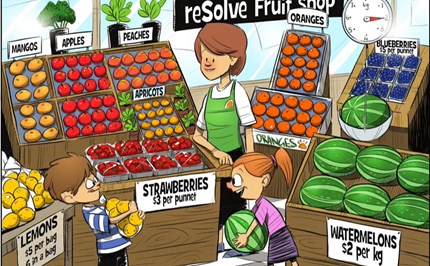Please note: This site contains links to websites not controlled by the Australian Government or ESA. More information here.
reSolve fruit shop 1
Explores different arrays and quantities. Students compare and contrast different arrays and connect these to multiplication. They then use what they know to solve subsequent problems.
Additional details |
|
| Year level(s) | Year 2 |
|---|---|
| Audience | Student, Teacher |
| Purpose | Teaching resource, Teaching strategies |
| Format | Video |
| Teaching strategies and pedagogical approaches | Questioning, Targeted teaching, Worked examples |
| Keywords | comparing, contrasting, arrays, multiplication, problem solving, explicit teaching |
Curriculum alignment |
|
| Curriculum connections | Numeracy |
| Strand and focus | Number, Build understanding |
| Topics | Multiplication and division |
| AC: Mathematics (V9.0) content descriptions |
AC9M2N05
Multiply and divide by one-digit numbers using repeated addition, equal grouping, arrays, and partitioning to support a variety of calculation strategies |
| Numeracy progression |
Multiplicative strategies (P5)
|
Copyright details |
|
| Organisation | NSW Department of Education |
| Copyright | © State of New South Wales (Department of Education), 2020 Creative Commons Attribution 4.0, unless otherwise indicated. |
Related resources
-
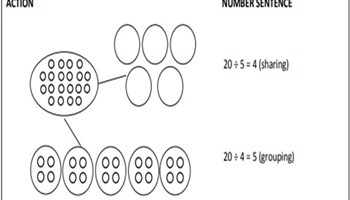
How many clumps?
Students show multiplication and division and connect division and multiplication using part-part-whole terms. The lesson follows the culturally-responsive pedagogy framework that incoporates the Reality, Mathematics, Abstraction and Reflection (RAMR) model.
Resource details -
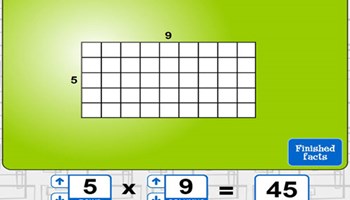
Multiplication and division: Year 2 – planning tool
This planning resource for Year 2 is for the topic of Multiplication and division.
Resource details -
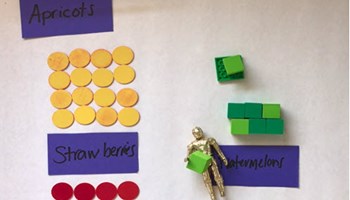
reSolve fruit shop 2
Another video that uses fruit arrangements to engage in multiplicative thinking.
Resource details -
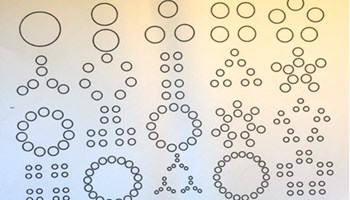
YouCubed number visuals
A video that invites students to think visually and multiplicatively about numbers.
Resource details
